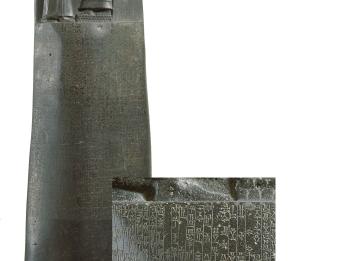A Practice Letter on a Jar
Late ninth or Early eighth Century BCE
Message of Amaryaw: “Say to my lord, are you well? I have blessed you by YHWH of Teman and His asherah. May He bless you and may He keep you, and may He be with my lord [forever(?)].”)
Notes
[Teman—a place in the Sinai-Negev wilderness. Another practice letter from Kuntillet Ajrud (not included in this volume) mentions YHWH of Samaria. These epithets presumably refer to centers of YHWH’s worship or places where he revealed himself. Some scholars believe that asherah refers to the Canaanite fertility goddess Asherah and that the prayer for blessing is addressed to her, too. But the following verb— “grant deliverance”—is singular, and asherah here more likely refers to a sacred pole or tree, also called asherah, that sometimes stood near the altar in sanctuaries (a practice forbidden in Deuteronomy 16:21; see “
Ivory Box with Ritual Scene
”). Blessings invoking sacred objects are known in the ancient Near East.—Eds.]
Credits
Published in: The Posen Library of Jewish Culture and Civilization, vol. 1.



